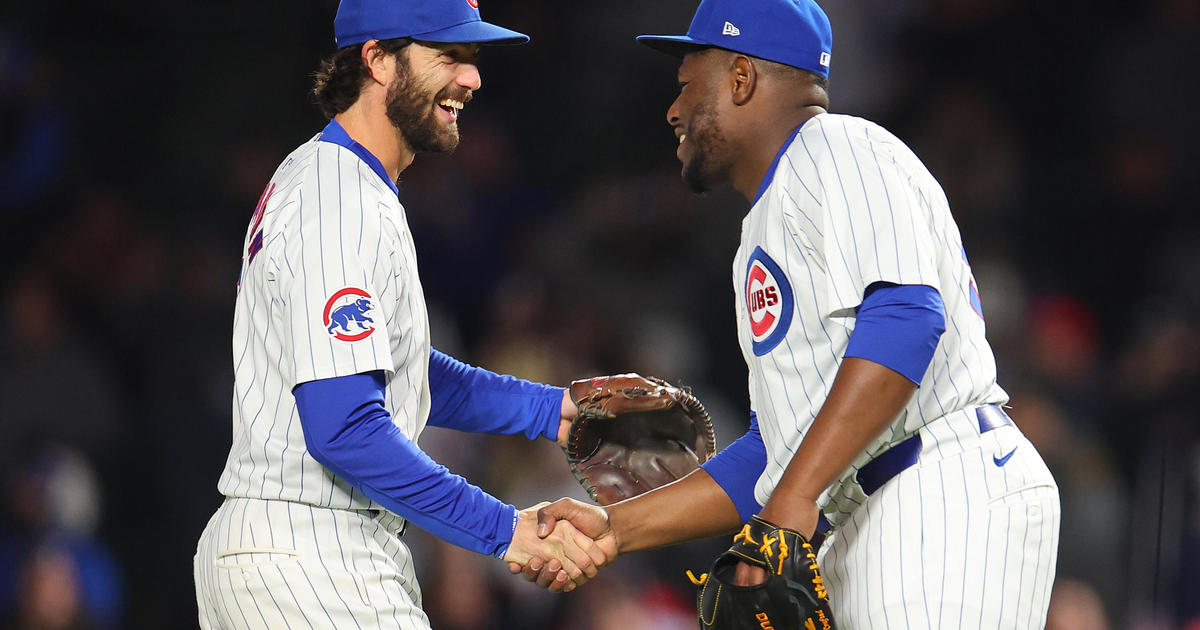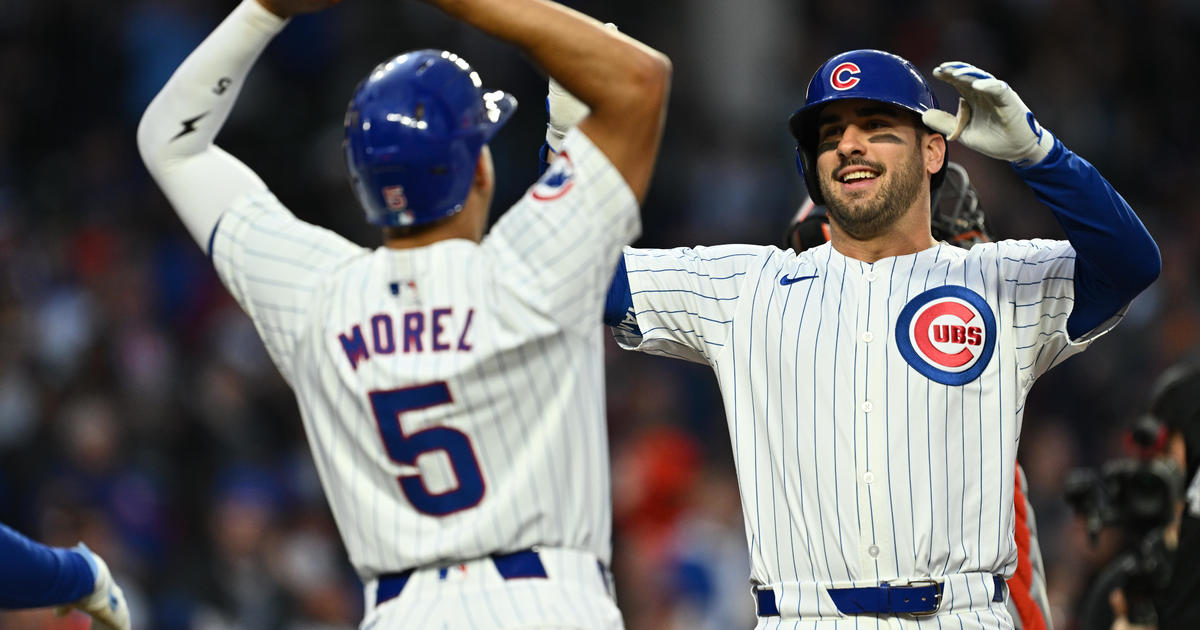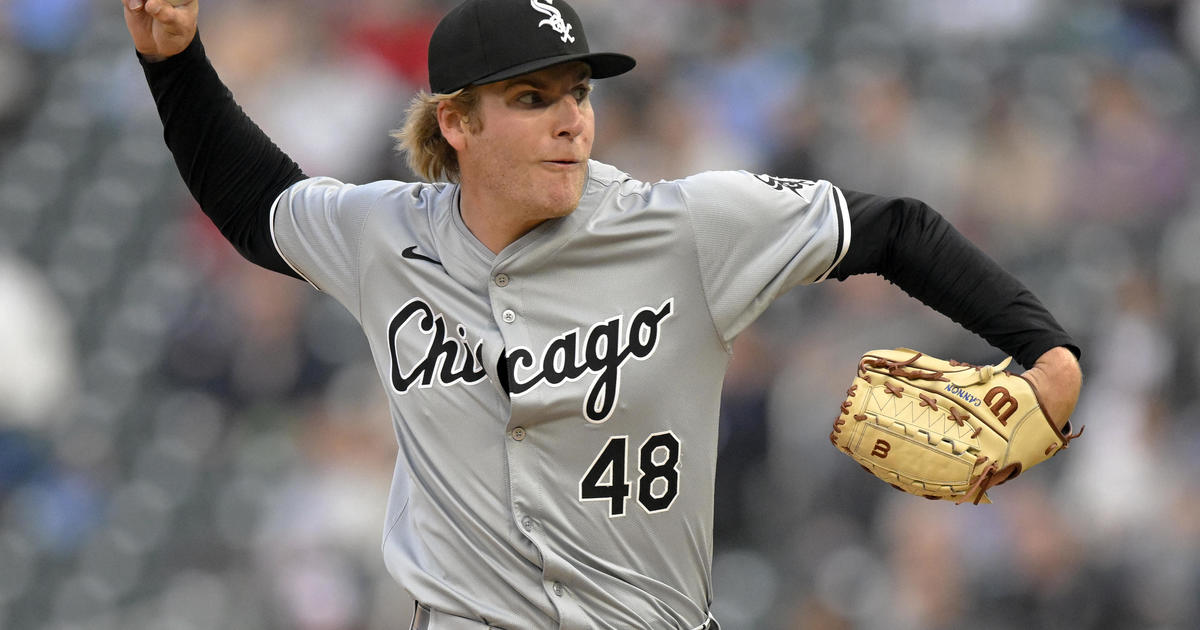Wisch: Astros Keep Their Nickname, Avoid Baseball's Name Game
By Dave Wischnowsky-
(CBS) What exactly is in a name?
Well, apparently, for fans of the Houston Astros, quite a bit.
Last week, Jim Crane, the new owner of Houston's major league ballclub, threw Texas into a tizzy when he mentioned that his marketing division was investigating the possibility of changing the Astros' nickname when they move to the American League West next season.
After a Texas-sized uproar against the idea, however, consider that investigation closed. On Monday, Crane emailed a video message to his season ticketholders assuring them that, "One thing that we are not going to change is the name," before adding: "The Houston Astros are here to stay."
That may be true, but the same certainly didn't apply 50 years ago when the Houston Colt .45s first came into existence. After the Lone Star State's first MLB franchise was founded in 1962, it would go on to change its name to the Astros just three years later when the team moved into the Astrodome.
If Houston followed similar logic this time around, I guess the Astros would become the Houston Americans when they switch to the AL.
It doesn't appear that any such thing will now happen. But if it had, the 'Stros hardly would have been the first MLB team to change its name. Just recently, the Montreal Expos became the Washington Nationals when they bolted Canada. And down in Florida, you'll recall that Tampa Bay decided that the Devil was in the details when it opted to simply become the Rays.
Long before that, the Chicago Cubs, oddly enough, were once called the Chicago White Stockings, while the Baltimore Orioles were called the Milwaukee Brewers and the New York Yankees were called the Baltimore Orioles.
Yeah, really.
In between those old-time days and today, there were a few other franchises – including those Colt .45s – that changed their identities when they made their big moves …
The Houston Colt .45s
In the early 1960s, a Texan by the name of William Irving Neder offered up the name of "the gun that won the west" as his entry for a "Name The Team" contest in Houston. It won, and in 1961, the Colt .45s were born as MLB an expansion team.
Also giving birth that expansion year was New York City, which to Ron Santo's ultimate dismay brought the Mets into the world. Unlike Houston, Queens' favorite ballclub has kept its nickname to present day, and stayed in its original home, Shea Stadium, until just recently (moving to Citi Field in 2009).
The Colt .45s, meanwhile, began their existence by playing games at Colt Stadium, a flimsy, temporary field that was supposed to tide Houstonians over until the world's first indoor baseball stadium, based loosely on the Roman Colosseum, could be built.
Perhaps the biggest wonder in the world before the Astrodome, nicknamed "The Eighth Wonder of the World," was completed was that baseball fans – and baseball itself – survived three sweltering summers outdoors in South Texas.
The Seattle Pilots
In 1969, the Seattle Pilots entered Major League Baseball as an American League West expansion team.
They lasted for all of one season.
Part of the problem was that the Pilots were forced into existence two seasons too early, as Missouri senator Stuart Symington didn't want Kansas City to have to wait until 1971 – Seattle's scheduled start date – for an expansion team after the Athletics bolted for Oakland in 1968.
As a result, both the Royals and the Pilots were introduced for the 1969 season. With no time to complete a new ballpark, Seattle was forced to play its home games at Sick's Stadium, which pretty much lived up to its name.
The longtime home of the Seattle Rainiers, Sick's was once considered one of the best ballparks in minor league baseball. Not so by the late 1960s, however. To house the Pilots, the stadium was supposed to expand by 30,000 seats, but by 1969, it had added only 17,000. On the night before Opening Day, the scoreboard wasn't even ready for use.
Likely in large part because of its environs, attendance was poor and by the end of the season, the Pilots were woefully short on cash. During the offseason, a Milwaukee car salesman by the name of Bud Selig swooped into the picture and ultimately brokered a deal to buy the Pilots and move them to Milwaukee as the Breweres.
In a bizarre situation, however, Selig's deal wasn't approved until the Pilots officially declared bankruptcy just six days before Opening Day 1970. So late was the finalization that Selig had to scrap his plans to change the team's colors from the Pilots' blue and gold to navy and red. The Brewers were even stuck using old Pilots' uniforms for a season, with the outline of the Pilots logo clearly visible all year long.
To this day, Seattle's roots still show in Milwaukee, where the Brewer colors remain blue and gold.
The Washington Senators
The Senators would eventually become known by the joke: "First in war, first in peace and last in the American League." But Washington's sadsack ballclub wasn't always so woeful.
In fact, from 1911 to 1933 the Senators were one of baseball's better teams, reaching the World Series in 1924 and 1925 and winning it in '24. In 1933, the Senators again reached the Fall Classic, but were felled there by the New York Giants and then went into a decades-long tailspin.
By 1955, the team's owner Clark Griffith had passed away and his nephew and adopted son, Calvin, assumed the Senators' reins. Calvin sold Griffith Stadium to the city of Washington and then leased it back, leading to speculation that the team would leave town.
In 1961, that speculation proved true when the Senators pulled up roots and moved to Minneapolis-St. Paul, where they became the Minnesota Twins.
And … The Washington Senators
As the Senators left Washington, D.C., however, the Senators also arrived in Washington, D.C.
Part of the deal that allowed the original franchise to relocate to the Twin Cities included replacing the old Senators in 1961 with an expansion franchise also nicknamed the Senators.
The team played the '61 season at old Griffith Stadium before moving in 1962 to District of Columbia Stadium, now known as Robert F. Kennedy Memorial stadium. Even with the new digs, new roster and new ownership, the Senators kept up their old ways.
For a decade, they lost an average of 90 games a season, which prompted a twist on their predecessors' joke, "Washington: first in war, first in peace and still last in the American League."
With a lack of success and ownership stability, by 1971 the new Senators decided to leave town and agreed to move to Arlington, Texas, where they became the Rangers.
Twice spurned by MLB, Senators fans were livid and during the team's last game in Washington thousands of then simply walked in to the ballpark without paying. In the top of the ninth inning, hundreds of young men then stormed the field, raiding it for souvenirs.
One fan even grabbed first base and ran off with it. And with only three bases and no sign of security reclaim the bag, the umpires decided to forfeit the game to the Yankees.
And with that, the Senators were finally out.
If nothing else, Dave Wischnowsky is an Illinois boy. Raised in Bourbonnais, educated at the University of Illinois and bred on sports in the Land of Lincoln, he now resides on Chicago's North Side, just blocks from Wrigley Field. Formerly a reporter and blogger for the Chicago Tribune, Dave currently writes a syndicated column, The Wisch List, which you can check out via his blog at http://www.wischlist.com. Follow him on Twitter @wischlist and read more of his CBS Chicago blog entries here.




